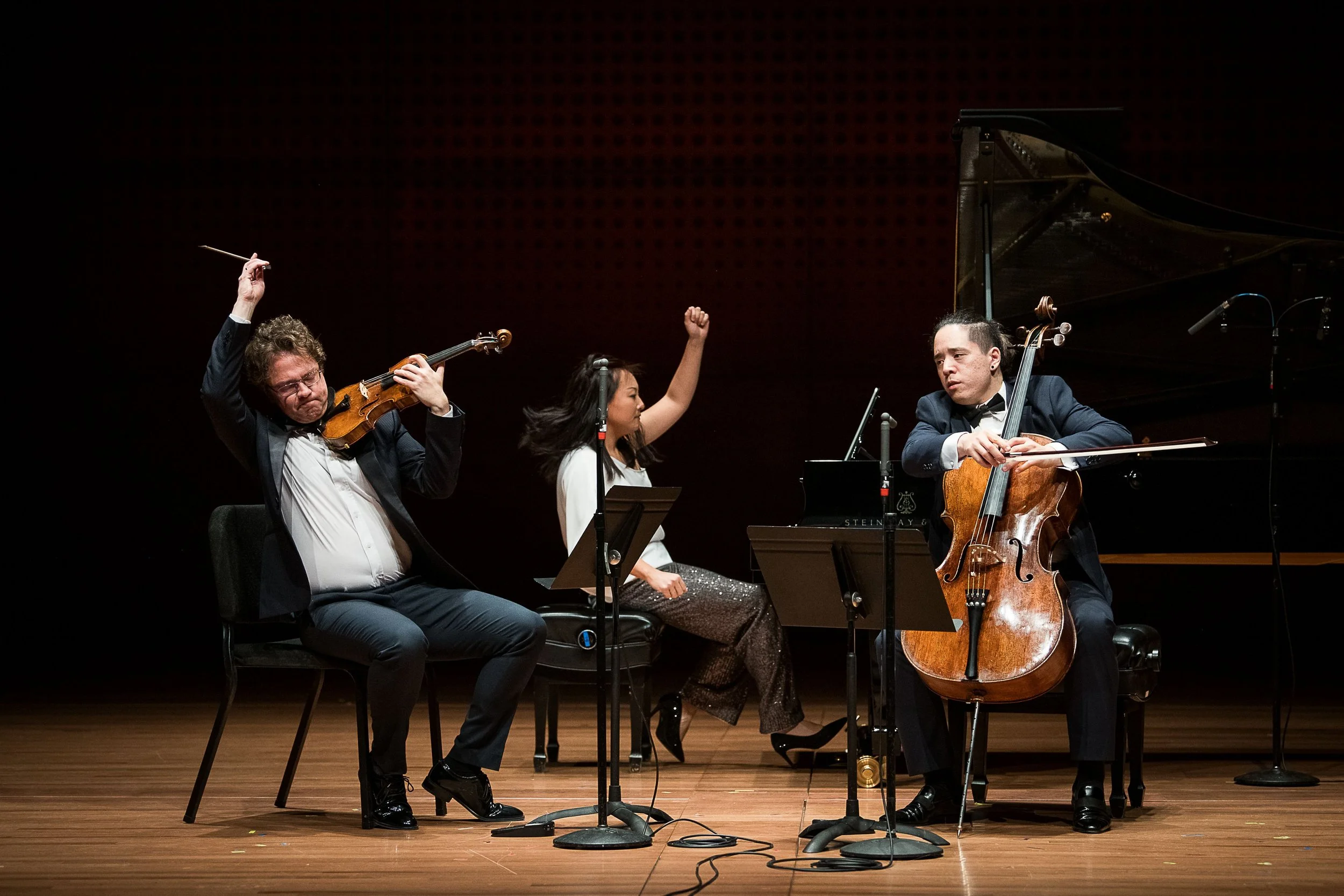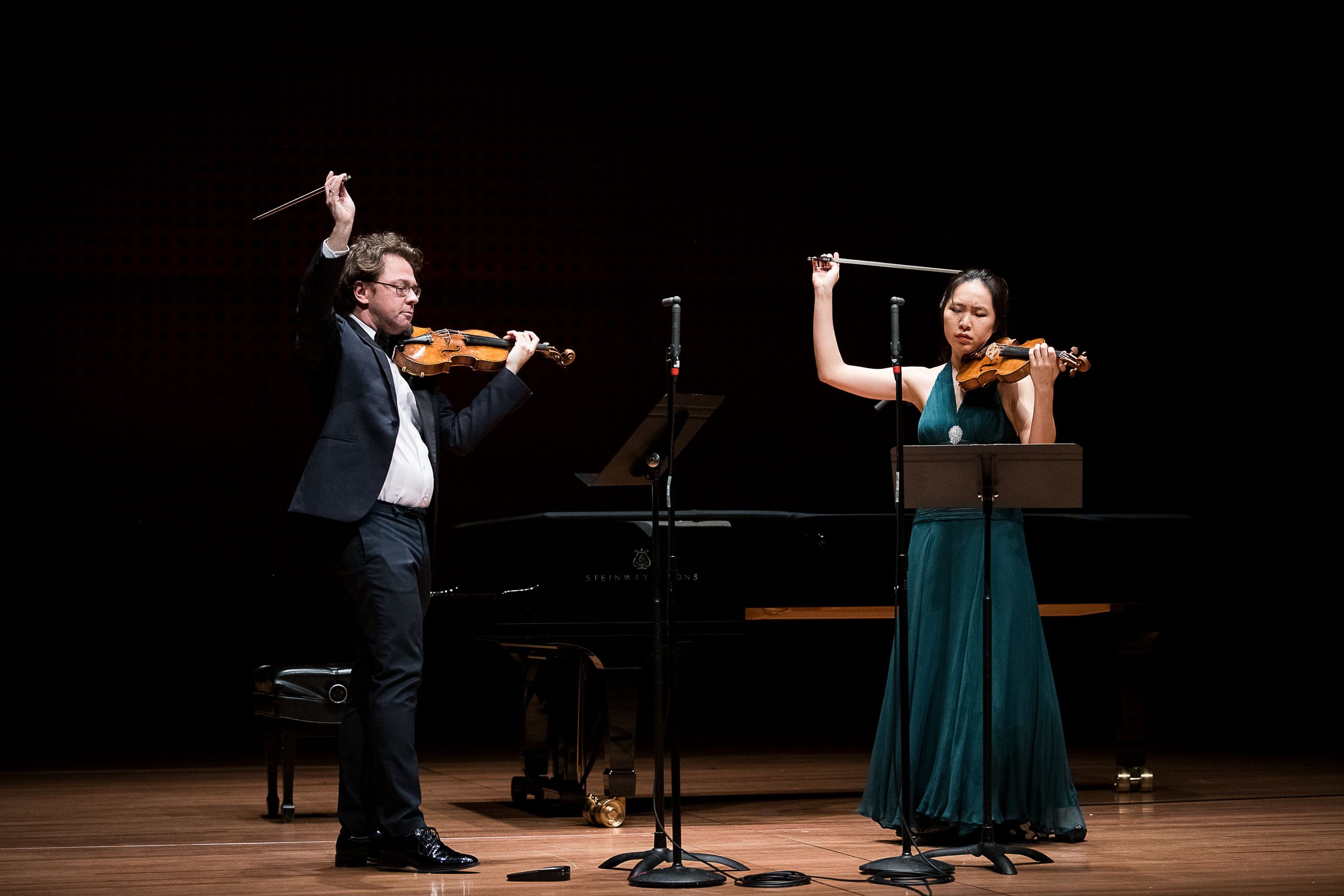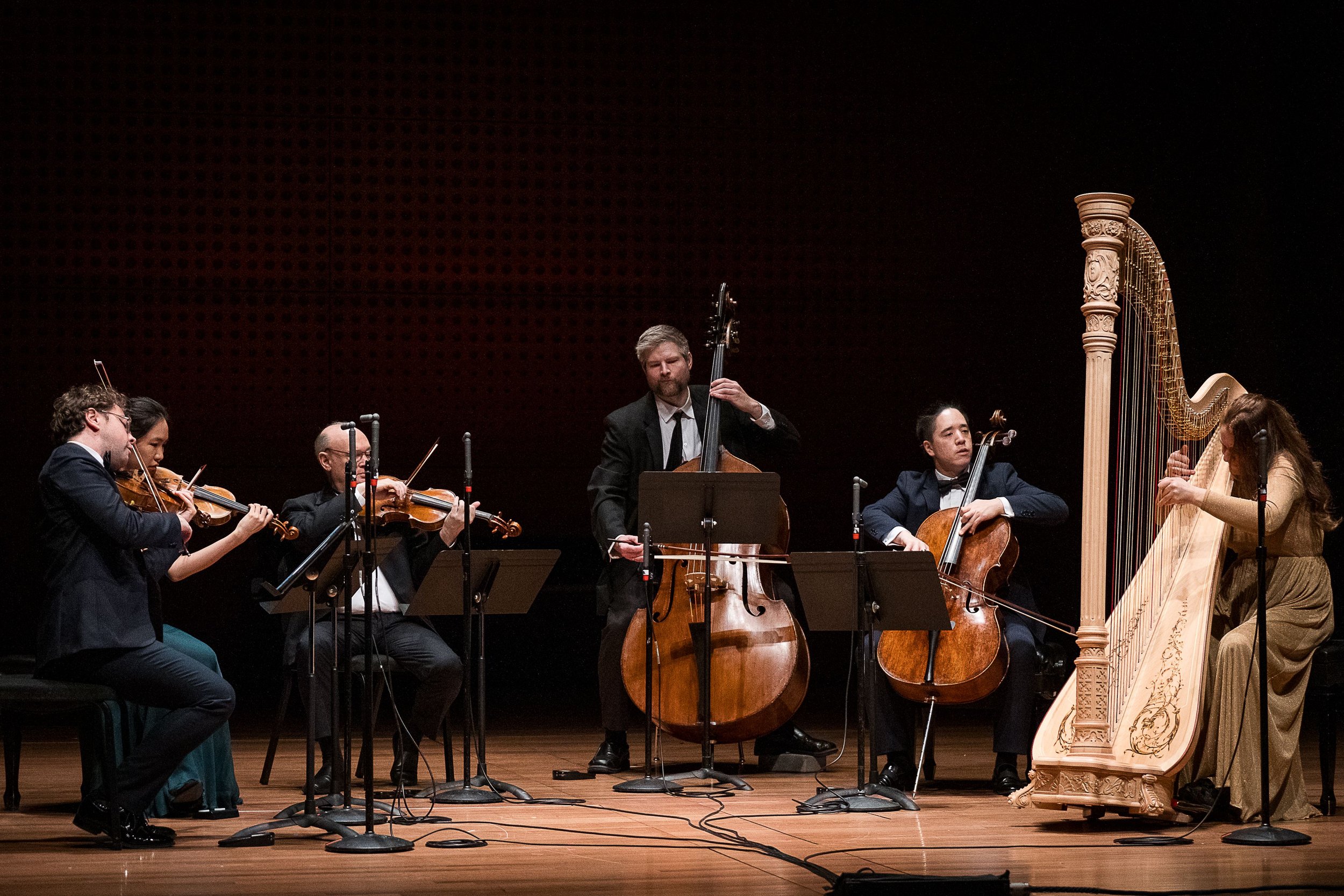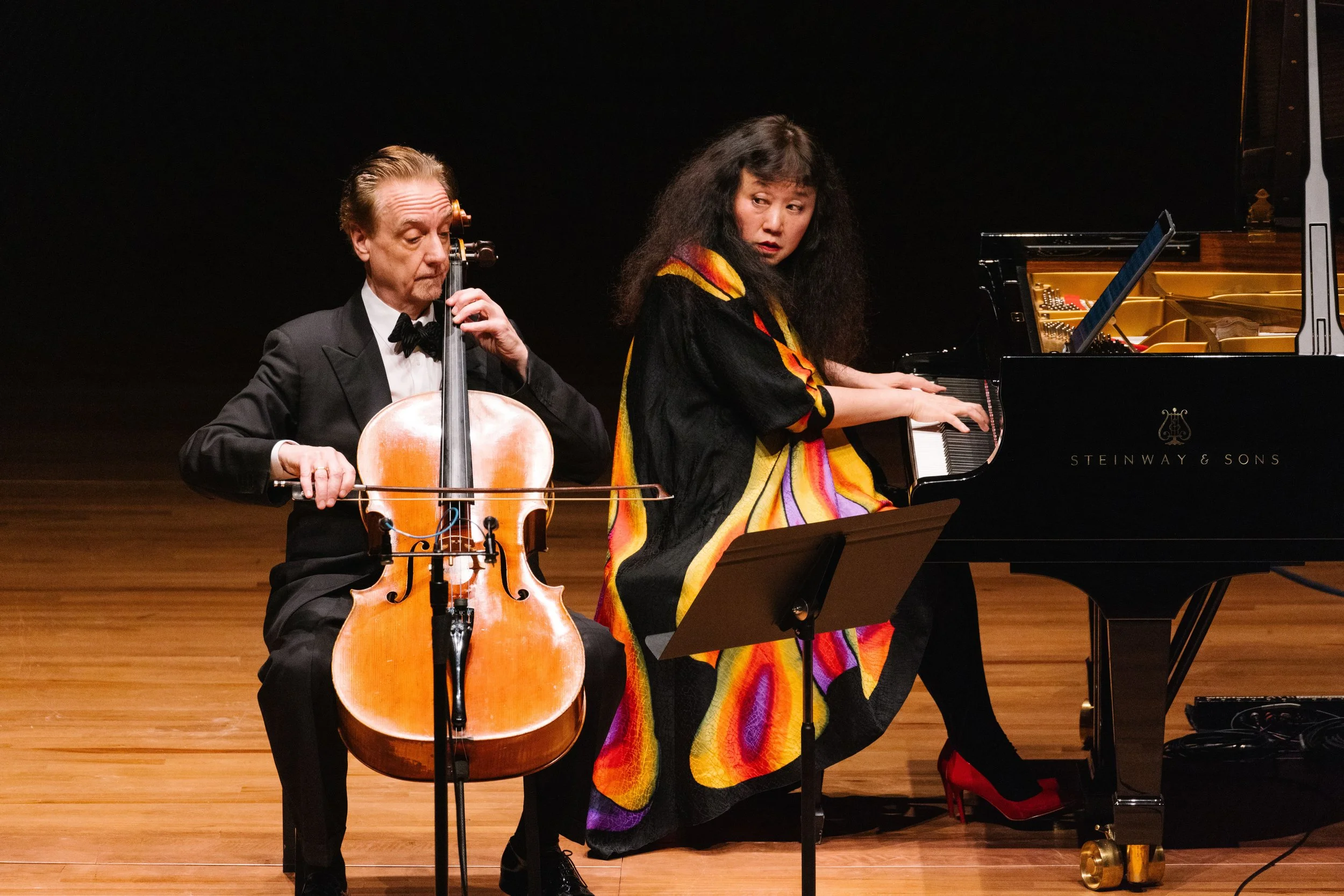REVIEW: French Chamber Music, Sacred and Profane
Above, Alexander Sitkovetsky, Wu Qian, and Isang Enders. Photo by Cherylynn Tsushima.
February 10, 2024
Chamber Music Society of Lincoln Center explored the essence of French chamber music over the centuries in Sacred and Profane, circulating flute and stings, harp and piano, with a touch of French Baroque, a taste of 1950s modernism, and a healthy dose of early 20th-century favorites by Debussy and Ravel.
Jean-Marie Leclair, renowned violinist in early 18th-century France, met an unfortunate end. But Alexander Sitkovetsky and Danbi Um foreshadowed no gloom, vibrantly diving into the Sonata in E minor for Two Violins, Op. 3, No. 5, a busy, tapestry of elegant embellishments. Vivaldi’s Four Seasons on holiday in the court of Louis XV, a cobweb-clearing aperitif.
Photo by Cherylynn Tsushima.
The decorative stylings of Leclair’s two fiddles were cleverly juxtaposed with the spiritually cleansing music of Olivier Messiaen: Le Merle noir (The Blackbird) for Flute and Piano, a concise gem inspired by birdsong. Flutist Tara Helen O'Connor and pianist Wu Qian engaged in an alternately languid and intense dialogue. O’Conor’s tone palette on the flute was spontaneous and colorful, yet cohesive and precise. Wu Qian sang and splashed at the keyboard with aviary exuberance.
Photo by Cherylynn Tsushima.
Stylishly commanding the foreground, Bridget Kibbey dazzled on the harp in Claude Debussy’s Danse sacrée et Danse profane for Harp, Two Violins, Viola, Cello, and Bass. The tuneful and ingratiating work from 1904 was effortless and well-choreographed.
Violist Paul Neubauer shined brightly in the Suite for Flute, Violin, Viola, Cello, and Harp, Op. 34 of Marcel Tournier, harpist and composer, his viola’s copper-hued singing tone rising to the fore. The ensemble was tight, and lithe, and cornered the briskly shifting textures with crisp brushstrokes in this crowdpleaser from 1928.
Photo by Cherylynn Tsushima.
Maurice Ravel dominated the program’s second half. First, an experiment with mixed results: the piano Sonatine, arranged for flute, cello, and harp by Carlos Salzedo. O’Conor and Kibbey were joined by cellist Isang Enders in three breezy and graceful movements (the second movement too breezy). Little inner countermelodies were newly, flatteringly illuminated, but at times the uneven arrangement made a hash of the ambiguous chorus of voices in Ravel’s piano score.
Sitkovetsky, Enders, and Wu Qian fulfilled the promise of the evening with a radiant Ravel Piano Trio in A Minor, 1914 pinnacle of the trio repertoire. Strings and piano alike were beautifully in sync, allowing each other space to breath, every hill and valley fleshed out. Ravel’s Trio proves to be sacred, precisely because it dares to be profane; it contains, in Ravel’s very French way, the universe.
***








